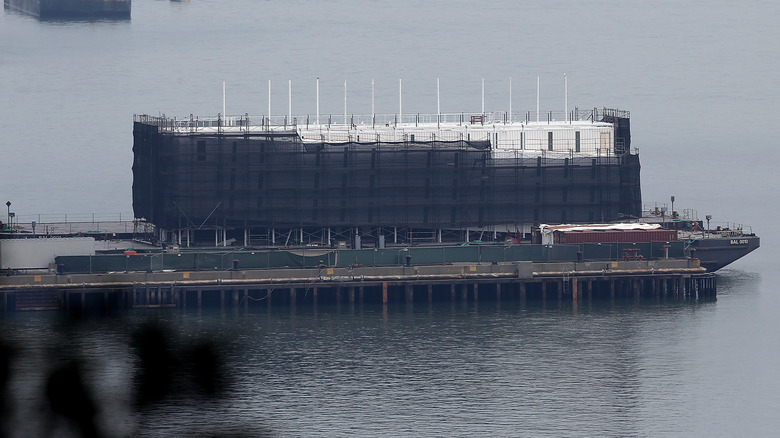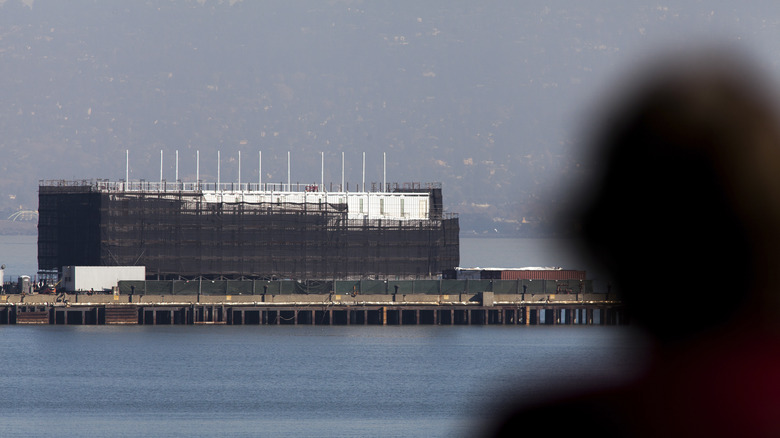The Google Barge Explained: What Happened To Google's Offshore Showrooms
We all have seen cartoons or shows where an important character has a not-so-secret base off the coast of a major city. However, what if there was a real-world equivalent to these hideouts? That was essentially what the Google Barge tried to do, but instead of housing the Teen Titans, it was meant to be an exclusive showroom for VIPs and a retail center. In 2013, four of these barges were revealed and were touted as Google's next big experiment.
It was one that promised a flashy new way to experience Google's tech prowess, especially as the company was expanding into the hardware business –- at the time of the reveal of the barges, the Chromebook laptop was two years old and the Pixel phone was three years out from release. According to San Francisco-based CBS affiliate KPIX 5 at the time, most of the barges' floors were outfitted with "chrome features and floor lighting," while their upper decks served as more informal party spaces. It was an ambitious plan that seemed poised to be the upscale version of Apple's swanky stores, but it was a plan that ultimately ended up in the trash heap, figuratively and literally.
The fiery truth
Unfortunately, the Google Barge was not long for this earth. Just one year after they were unveiled, the city of Portland revealed that their city's version of the new center was sold and divided between its overall structure and its individual containers. While the structure would be sold to what the Press Herald describes as an "international barging company," the containers would be torn down and scrapped for parts.
The strange thing about these barges was that they were never actually put to use. According to The Wall Street Journal, none of the four barges that were built officially opened due to potential structural dangers. The United States Coast Guard issued a safety inquiry into the structures and found an abnormal division of fuel across the structures.
"These vessels will have over 5,000 gallons of fuel on the main deck and a substantial amount of combustible material on board," wrote the Coast Guard.
In layperson's terms, they feared that even a minor malfunction could result in a massive fire. Not much else is known about the back-and-forth between the Coast Guard and Google, but there were seemingly attempts to reach a structural compromise, according to Consumerist. However, they simply were not feasible, forcing Google to cancel the project just one year after its mysterious reveal. That being said, even if the structure was deemed safe, it simply sounded too exclusive of an idea to effectively market. At least we have Google Stores now.

